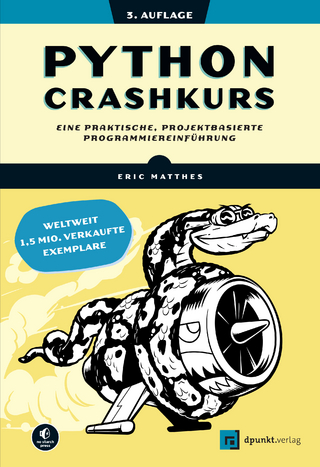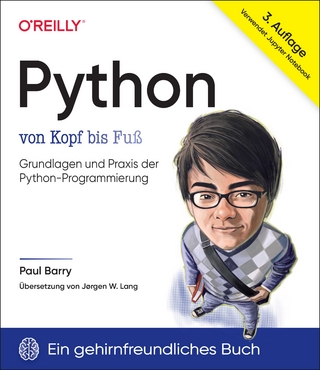
Introduction to Python for Engineers and Scientists
Open Source Solutions for Numerical Computation
Seiten
2017
|
1st ed.
Apress (Verlag)
978-1-4842-3203-3 (ISBN)
Apress (Verlag)
978-1-4842-3203-3 (ISBN)
Familiarize yourself with the basics of Python for engineering and scientific computations using this concise, practical tutorial that is focused on writing code to learn concepts. Introduction to Python is useful for industry engineers, researchers, and students who are looking for open-source solutions for numerical computation.
In this book you will learn by doing, avoiding technical jargon, which makes the concepts easy to learn. First you’ll see how to run basic calculations, absorbing technical complexities incrementally as you progress toward advanced topics. Throughout, the language is kept simple to ensure that readers at all levels can grasp the concepts.
What You'll Learn
Understand the fundamentals of the Python programming language
Apply Python to numerical computational programming projects in engineering and science
Discover the Pythonic way of life
Applydata types, operators, and arrays
Carry out plotting for visualization
Work with functions and loops
Who This Book Is For
Engineers, scientists, researchers, and students who are new to Python. Some prior programming experience would be helpful but not required.
In this book you will learn by doing, avoiding technical jargon, which makes the concepts easy to learn. First you’ll see how to run basic calculations, absorbing technical complexities incrementally as you progress toward advanced topics. Throughout, the language is kept simple to ensure that readers at all levels can grasp the concepts.
What You'll Learn
Understand the fundamentals of the Python programming language
Apply Python to numerical computational programming projects in engineering and science
Discover the Pythonic way of life
Applydata types, operators, and arrays
Carry out plotting for visualization
Work with functions and loops
Who This Book Is For
Engineers, scientists, researchers, and students who are new to Python. Some prior programming experience would be helpful but not required.
Sandeep Nagar, Ph.D. teaches and consults on the use of Python and other open source programming languages for for data science/analysis and numerical computing for engineering and science applications. In addition to teaching at universities, he frequently gives workshops covering open source software. Sandeep has a Ph.D. in Material Science from KTH, Sweden in May 2012. Prior to that degree, he obtained a M.Sc. in Physics with specialization in Electronics and Radio Physics and a B.Sc.B.Ed degrees in India.
1. Philosophy of Python.- 2. Introduction to the Basics of Python.- 3. Ipython.- 4. Data Types.- 5. Operators.- 6. Arrays.- 7. Plotting.- 8. Functions and Loops.- 9. Object-Oriented Programming.- 10. Numerical Computing Formalism.
| Erscheinungsdatum | 07.01.2018 |
|---|---|
| Zusatzinfo | 30 Illustrations, color; XVII, 254 p. 30 illus. in color. |
| Verlagsort | Berkley |
| Sprache | englisch |
| Maße | 155 x 235 mm |
| Themenwelt | Informatik ► Programmiersprachen / -werkzeuge ► Python |
| Informatik ► Theorie / Studium ► Compilerbau | |
| ISBN-10 | 1-4842-3203-8 / 1484232038 |
| ISBN-13 | 978-1-4842-3203-3 / 9781484232033 |
| Zustand | Neuware |
| Haben Sie eine Frage zum Produkt? |
Mehr entdecken
aus dem Bereich
aus dem Bereich
eine praktische, projektbasierte Programmiereinführung
Buch | Softcover (2023)
dpunkt (Verlag)
32,90 €
Grundlagen und Praxis der Python-Programmierung
Buch | Softcover (2024)
O'Reilly (Verlag)
49,90 €


